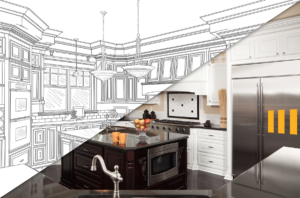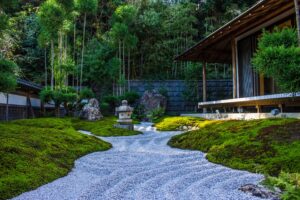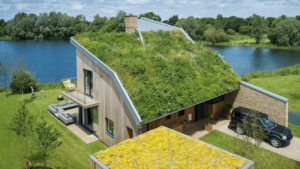Green Renovations: Sustainable Practices and Eco-Friendly Materials for Your Home
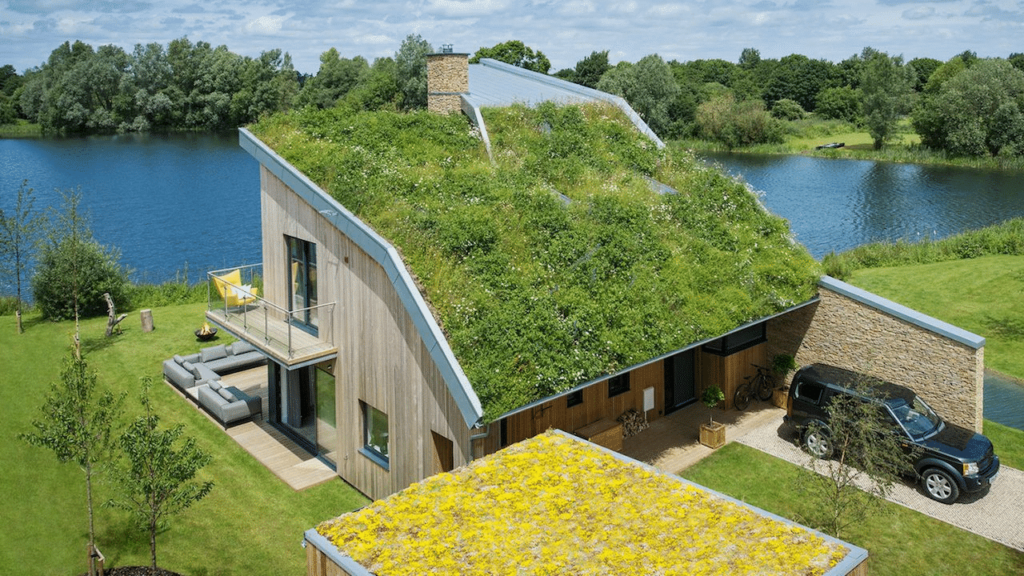
In today’s environmentally conscious world, homeowners are increasingly turning to green renovations to reduce their carbon footprint and create healthier living spaces. Green renovations encompass a wide range of practices and materials aimed at improving energy efficiency, reducing waste, and minimizing environmental impact. From energy-efficient appliances to eco-friendly building materials, there are numerous options available for homeowners looking to embrace sustainability in their home renovations.
Benefits of Green Renovations
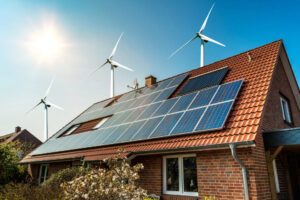
Green renovations offer a plethora of benefits, both for homeowners and the environment. One of the primary advantages is the significant reduction in energy consumption. By incorporating energy-efficient appliances, lighting, and HVAC systems, homeowners can lower their utility bills while minimizing their reliance on non-renewable energy sources. Additionally, green renovations can enhance indoor air quality by using low-VOC (volatile organic compound) paints and finishes, which reduce harmful emissions and create a healthier living environment for occupants.
Furthermore, green renovations can increase the value of your home. With growing awareness of environmental issues, eco-friendly features are becoming increasingly desirable among homebuyers. Properties with green certifications or sustainable features often command higher resale prices and attract a larger pool of potential buyers. Investing in green renovations not only benefits the environment but also offers long-term financial rewards for homeowners.
Moreover, green renovations promote sustainability and environmental stewardship. By using recycled materials, sustainable building practices, and renewable energy sources, homeowners can minimize their carbon footprint and contribute to the fight against climate change. Sustainable living is not only a personal choice but also a collective responsibility to preserve the planet for future generations. In-home tutors in Bettendorf can play a crucial role in educating individuals about the importance of environmental conservation and sustainable practices within their local community.
Energy-Efficient Appliances and Lighting
When embarking on a green renovation project, upgrading to energy-efficient appliances and lighting fixtures is a crucial step. Energy-efficient appliances, such as refrigerators, dishwashers, and washing machines, consume significantly less energy than their conventional counterparts, resulting in lower utility bills and reduced environmental impact. Look for appliances with Energy Star certification, which indicates they meet strict energy efficiency guidelines set by the Environmental Protection Agency (EPA).
Similarly, replacing traditional incandescent bulbs with LED or CFL (compact fluorescent lamp) bulbs can drastically reduce energy consumption and greenhouse gas emissions. LED bulbs are highly efficient, long-lasting, and produce less heat, making them an ideal choice for both indoor and outdoor lighting. Additionally, installing motion sensors or timers can further optimize energy usage by automatically turning off lights when not in use.
Incorporating natural light into your home design is another effective way to reduce energy usage and enhance comfort. Consider installing skylights, solar tubes, or larger windows to maximize daylighting and minimize the need for artificial lighting during the day. Not only does natural light create a warm and inviting atmosphere, but it also offers numerous health benefits, such as improved mood and productivity. Colorado shutters can be a valuable addition to your design, providing versatility in controlling natural light and enhancing the aesthetics of your living space.
Sustainable Building Materials
Choosing eco-friendly building materials is essential for reducing the environmental impact of your renovation project. From flooring and countertops to insulation and roofing, there are countless options available that prioritize sustainability and durability. One popular choice is bamboo flooring, which is renewable, biodegradable, and highly resistant to moisture and pests. Bamboo grows rapidly and can be harvested without causing deforestation, making it an eco-friendly alternative to traditional hardwood flooring. When sourcing materials, it’s also important to consider the environmental practices of your branded merchandise supplier.
Another sustainable option for countertops is recycled glass or concrete countertops, which are made from recycled materials and offer unique aesthetic appeal. These countertops are durable, heat-resistant, and available in a variety of colors and textures to suit any design preference. Additionally, recycled glass countertops help divert waste from landfills and reduce the demand for virgin materials.
When it comes to insulation, eco-friendly options such as cellulose insulation, made from recycled paper fibers, and wool insulation, derived from sheep’s wool, offer superior thermal performance and environmental benefits. These natural insulating materials are non-toxic, biodegradable, and provide excellent soundproofing properties, creating a comfortable and energy-efficient home environment.
Renewable Energy Solutions
Incorporating renewable energy solutions into your home renovation project is an effective way to reduce reliance on fossil fuels and lower carbon emissions. Solar panels are a popular choice for homeowners looking to harness the power of the sun and generate clean, renewable energy onsite. Solar photovoltaic (PV) systems convert sunlight into electricity, which can be used to power appliances, lighting, and heating systems, thereby reducing dependence on the grid and lowering electricity bills.
In addition to solar panels, other renewable energy technologies such as wind turbines and geothermal heat pumps offer alternative sources of clean energy for residential properties. Wind turbines can be installed on rooftops or in open spaces to capture wind energy and convert it into electricity, while geothermal heat pumps utilize the natural heat stored beneath the earth’s surface to provide heating, cooling, and hot water for homes.
Investing in renewable energy solutions not only reduces your carbon footprint but also provides long-term savings on energy costs and increases the resilience of your home to power outages and fluctuations in energy prices. Moreover, many governments and utility companies offer financial incentives, rebates, and tax credits for installing renewable energy systems, making them a cost-effective choice for environmentally conscious homeowners. In regions prone to natural disasters like water damage restoration in Charlotte, incorporating renewable energy solutions can be particularly beneficial for mitigating risks and enhancing sustainability efforts.
Maximizing Water Efficiency
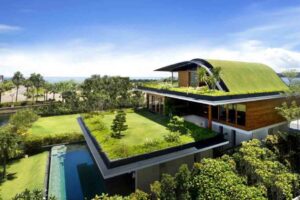
In the pursuit of maximizing water efficiency during green renovations, homeowners can explore advanced technologies and innovative solutions to further reduce water consumption and minimize environmental impact. Beyond the installation of low-flow fixtures and faucets, implementing smart irrigation systems can significantly enhance water conservation efforts. These systems utilize weather data and soil moisture sensors to optimize watering schedules, ensuring that landscapes receive the appropriate amount of water without wastage. Furthermore, rainwater harvesting systems can be expanded to capture runoff from rooftops and redirect it to storage tanks for later use in irrigation or non-potable applications, such as toilet flushing and laundry. Homeowners may also consider franchising services that specialize in eco-friendly landscaping and water management, offering expert guidance and support in implementing sustainable practices for long-term environmental benefits.
Moreover, greywater recycling systems can be integrated with plumbing fixtures to capture and treat wastewater from showers, sinks, and washing machines for reuse within the home. By treating greywater on-site and repurposing it for non-potable uses, homeowners can further reduce their reliance on freshwater sources and minimize the burden on municipal water treatment facilities. Additionally, implementing water-efficient landscaping practices, such as xeriscaping and mulching, can help minimize water usage in outdoor spaces by promoting soil moisture retention and reducing evaporation.
By adopting a holistic approach to water efficiency in green renovations, homeowners can not only conserve water but also contribute to environmental sustainability and resilience in the face of water scarcity challenges. Through the integration of cutting-edge technologies, sustainable landscaping practices, and water reuse systems, homeowners can create water-efficient homes that prioritize resource conservation and environmental stewardship. They can indulge in luxury experiences, such as rent a luxury car, knowing they are minimizing their environmental footprint.
Healthy Indoor Air Quality
In the pursuit of healthy indoor air quality during green renovations, homeowners can explore additional measures and strategies to mitigate indoor pollutants and enhance occupant comfort and well-being. Beyond the use of low-VOC paints and finishes, incorporating natural ventilation systems can help promote airflow and reduce the buildup of indoor pollutants, such as volatile organic compounds (VOCs), formaldehyde, and allergens. Cross-ventilation techniques, such as strategically placed windows and vents, can facilitate the exchange of indoor and outdoor air, diluting pollutants and improving overall air quality. Considering the choice of textiles like womens waffle robes can also contribute to maintaining a healthier indoor environment by minimizing potential sources of pollutants.
Moreover, integrating indoor plants into interior spaces can serve as natural air purifiers, absorbing harmful pollutants and releasing oxygen into the air. Certain plants, such as spider plants, peace lilies, and snake plants, have been shown to effectively remove indoor toxins, including formaldehyde, benzene, and trichloroethylene. Additionally, investing in high-efficiency air filtration systems with HEPA filters can capture airborne particles and allergens, improving indoor air quality and reducing respiratory issues for occupants.
Furthermore, regular maintenance of HVAC systems, including cleaning filters and ducts, is essential for ensuring optimal indoor air quality and preventing the buildup of dust, mold, and bacteria. By prioritizing healthy indoor air quality in green renovation projects, homeowners can create safer, more comfortable living environments that support overall health and well-being for occupants of all ages. Investing in Japanese scissors for precise cutting during renovation tasks can enhance efficiency and craftsmanship, further contributing to the quality of the living space.
Smart Home Integration
Expanding smart home integration in green renovations involves leveraging emerging technologies and interconnected devices to further optimize energy efficiency, convenience, and security within the home. Beyond the installation of smart thermostats and lighting controls, incorporating advanced energy management systems can provide homeowners with real-time insights and analytics into their energy usage patterns, empowering them to make informed decisions and adjustments to reduce consumption and costs. Integrating a bass fishing app into the smart home ecosystem could offer enthusiasts the ability to monitor weather conditions and water temperatures seamlessly, enhancing their fishing experience while promoting sustainable energy practices.
Moreover, the adoption of smart appliances and systems, such as energy-efficient refrigerators, dishwashers, and HVAC systems, can further enhance energy efficiency and reduce environmental impact. These appliances are equipped with advanced features, such as energy-saving modes, remote monitoring, and adaptive controls, to optimize performance and minimize energy waste. Additionally, integrating renewable energy sources, such as solar panels and wind turbines, with smart home automation systems can enable homeowners to maximize the use of clean, renewable energy and reduce reliance on the grid.
Furthermore, expanding smart home integration to include home security and monitoring systems can enhance safety and peace of mind for homeowners. Smart cameras, motion sensors, and doorbell cameras can provide real-time alerts and surveillance footage, allowing homeowners to monitor their property remotely and deter potential intruders. By embracing smart home integration in green renovations, homeowners can unlock new levels of energy efficiency, convenience, and security while reducing their environmental footprint and enhancing overall quality of life, thus facilitating tasks like arranging car rental in Sarajevo.
Landscaping and Outdoor Spaces
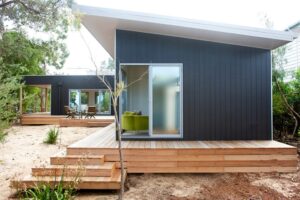
Diving deeper into eco-friendly landscaping and outdoor spaces in green renovations involves exploring innovative techniques and sustainable practices to create resilient, biodiverse landscapes that harmonize with the natural environment. In addition to native plants and drought-tolerant landscaping, incorporating edible gardens and permaculture principles can further enhance sustainability and self-sufficiency. Edible gardens, such as vegetable patches, fruit trees, and herb beds, not only provide fresh, organic produce but also support local biodiversity and promote ecosystem health. Integrating custom iron doors into these green renovations can enhance security and aesthetic appeal while maintaining a commitment to eco-friendly design principles.
Furthermore, integrating permaculture design principles, such as rainwater harvesting, swales, and food forests, can help create regenerative landscapes that mimic natural ecosystems and maximize resource efficiency. Rainwater harvesting systems, including rain barrels, cisterns, and swales, capture and store rainwater for irrigation purposes, reducing reliance on municipal water supplies and minimizing stormwater runoff. Additionally, incorporating food forests, which mimic the layers and diversity of natural forests, can provide a sustainable source of food, habitat for wildlife, and sequester carbon dioxide from the atmosphere.
Moreover, incorporating sustainable hardscaping materials, such as reclaimed wood, recycled concrete, and permeable pavers, can further enhance the environmental performance of outdoor spaces. These materials minimize environmental impact, reduce waste, and promote responsible resource management while creating beautiful and functional outdoor living areas. By embracing eco-friendly landscaping practices in green renovations, homeowners can create vibrant, resilient landscapes that not only enhance the beauty and value of their properties but also contribute to environmental sustainability and conservation efforts. Integrating misting pumps into outdoor designs can provide efficient cooling solutions while conserving water resources.
Conclusion
In conclusion, green renovations offer homeowners a wealth of opportunities to enhance sustainability, efficiency, and comfort within their homes. By maximizing water efficiency, prioritizing healthy indoor air quality, embracing smart home integration, and creating eco-friendly outdoor spaces, homeowners can create more resilient, resource-efficient, and environmentally conscious living environments. From advanced technologies and innovative solutions to sustainable practices and natural materials, there are countless ways to incorporate green principles into renovation projects and make a positive impact on the planet. By embracing sustainability in all aspects of home design and construction, homeowners can not only improve their quality of life but also contribute to a more sustainable and resilient future for generations to come.

